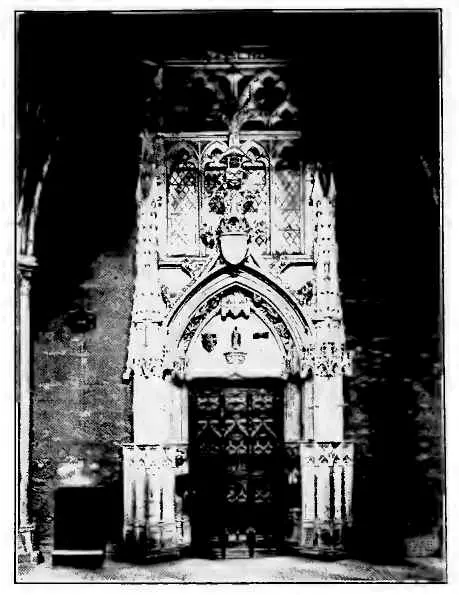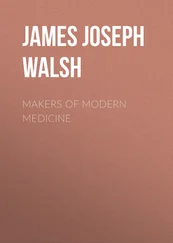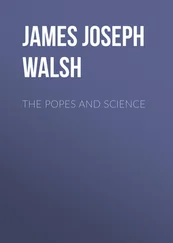James Walsh - The Thirteenth, Greatest of Centuries
Здесь есть возможность читать онлайн «James Walsh - The Thirteenth, Greatest of Centuries» — ознакомительный отрывок электронной книги совершенно бесплатно, а после прочтения отрывка купить полную версию. В некоторых случаях можно слушать аудио, скачать через торрент в формате fb2 и присутствует краткое содержание. Жанр: foreign_prose, История, foreign_edu, foreign_antique, на английском языке. Описание произведения, (предисловие) а так же отзывы посетителей доступны на портале библиотеки ЛибКат.
- Название:The Thirteenth, Greatest of Centuries
- Автор:
- Жанр:
- Год:неизвестен
- ISBN:нет данных
- Рейтинг книги:3 / 5. Голосов: 1
-
Избранное:Добавить в избранное
- Отзывы:
-
Ваша оценка:
- 60
- 1
- 2
- 3
- 4
- 5
The Thirteenth, Greatest of Centuries: краткое содержание, описание и аннотация
Предлагаем к чтению аннотацию, описание, краткое содержание или предисловие (зависит от того, что написал сам автор книги «The Thirteenth, Greatest of Centuries»). Если вы не нашли необходимую информацию о книге — напишите в комментариях, мы постараемся отыскать её.
The Thirteenth, Greatest of Centuries — читать онлайн ознакомительный отрывок
Ниже представлен текст книги, разбитый по страницам. Система сохранения места последней прочитанной страницы, позволяет с удобством читать онлайн бесплатно книгу «The Thirteenth, Greatest of Centuries», без необходимости каждый раз заново искать на чём Вы остановились. Поставьте закладку, и сможете в любой момент перейти на страницу, на которой закончили чтение.
Интервал:
Закладка:
This paragraph sets forth some almost incredible anticipations of what are usually considered among the most modern phases of medicine and surgery. Perhaps the most surprising thing is the simple statement that Salicet recognized that surgery cannot be learned from books alone. His case histories are instructive even to the modern surgeon who reads them. His insistence on his students making careful notes of their cases as the soundest foundation of progress in surgery, is a direct contradiction of nearly everything that has been said in recent years about medieval medicine and especially the teaching of medicine. (See Appendix.)
William's great pupil, Lanfranc, followed him in this, and Lanfranc encouraged the practise at the University of Paris. There is a note-book of a student at the University of Paris, made toward the end of the Thirteenth Century, carefully preserved in the Museum of the University of Berlin. This notebook was kept during Lanfranc's teaching and contains some sketches of dissections, as well as some illustrations of operative procedures, as studied with that celebrated surgeon. The tradition of case histories continued at the University of Paris down to the beginning of modern surgery.
Some of the doctrines in medicine that William of Salicet stated so clearly, sound surprisingly modern. The connection, for instance, between dropsy and durities renum (hardening of the kidneys) shows how wonderfully observant the old master was. At the present time we know very little more about the dropsical condition associated with chronic Bright's disease than the fact that it constantly occurs where there is a sclerosis or contraction of the kidney. Bright in his study of albuminuria and contracted kidney practically taught us no more than this, except that he added the further symptom of the presence of albumin in the urine. It must have been only as the result of many carefully studied cases, followed by autopsies, that any such doctrine could have come into existence. There is a dropsy that occurs with heart disease; there is also a dropsy in connection with certain affections of the liver, and yet the most frequent cause is just this hardening of the kidneys spoken of by this middle-of-the-Thirteenth Century Italian professor of medicine, who, if we would believe so many of the historians of medicine, was not supposed to occupy himself at all with ante and post-mortem studies of patients, but with the old-time medical authorities.
Almost more surprising than the question of dropsy is the investigation as to the causes of the failure of healing by first intention. The modern surgeon is very apt to think that he is the only one who ever occupied himself with the thought, that wounds might be made to heal by first intention and without the occurrence of suppuration or granulation. Certainly no one would suspect any interest in the matter as far back as the Thirteenth Century. William of Salicet, however, and Lanfranc, both of them occupied themselves much with this question and evidently looked at it from a very practical standpoint. Many careful observations must have been made and many sources of observational error eliminated to enable these men to realize the possibilities of primary union, especially, knowing as they did, nothing at all about the external causes of suppuration and considering, as did surgeons for nearly seven centuries afterward, that it was because of something within the patient's tissues that the cases of suppuration had their rise.
Unfortunately, the pioneer work done by William and his great disciple did not have that effect upon succeeding generations which it should have had. There was a question in men's minds as to whether nature worked better by primary union or by means of the suppurative process. In the next century surgeons took the wrong horn of the dilemma and even so distinguished a surgeon as Guy de Chauliac, who has been called, not without good cause, the father of surgery, came to the conclusion that suppuration was practically a necessary process in the healing of large wounds at least, and that it must be encouraged rather than discouraged. This doctrine did not have its first set-back until the famous incident in Ambroise Paré's career, when one morning after a battle, coming to his patients expecting to find many of them very severely ill, he found them on the contrary in better condition than the others for whom he had no forebodings. In accord with old custom he poured boiling oil into the wounds of all patients, but the great surgeon's supply of oil had failed the day before and he used plain water to cleanse the wounds of a number, fearing the worst for them, however, because of the poison that must necessarily stay in their wounds and then had the agreeable disappointment of finding these patients in much better condition than those whom he had treated with all the rules of his art, as they then were. Even this incident, however, did not serve to correct entirely the old idea as to the value of suppuration and down to Lister's time, that is almost the last quarter of the Nineteenth Century, there is still question of the value of suppuration in expediting the healing of wounds, and we hear of laudable pus and of the proper inflammatory reaction that is expected to bring about wound repair.
The danger of wounds of the neck is, of course, not a modern doctrine, and yet very few people would think for a moment that it could be traced back to the middle of the Thirteenth Century and to a practical teacher of surgery in a medieval Italian university. Here once more there is evidence of the work of a careful observer who has seen patients expire in a few minutes as the result of some serious incident during the course of operations upon the neck. He did not realize that the danger was due, in many cases, to the sucking in of air into the large veins, but even at the present time this question is not wholly settled and the problem as to the danger of the presence of air is still the subject of investigation.
As to the suture of divided nerves, it would ordinarily and as a matter of course be claimed by most modern historians of surgery and by practically all surgeons, as an affair entirely of the last half century. William of Salicet, however, neglected none of the ordinary surgical procedures that could be undertaken under the discouraging surgical circumstances in which he lived. The limitations of anesthesia, though there was much more of this aid than there has commonly been any idea of, and the frequent occurrence of suppuration must have been constant sources of disheartenment. His insistence on the use of the knife rather than on the cautery shows how much he appreciated the value of proper healing. It is from such a man that we might expect the advance by careful investigation as to just what tissues had been injured, with the idea of bringing them together in such juxtaposition as would prevent loss of function and encourage rapid and perfect union.

SCREEN (HEREFORD)

DOORWAY OF SACRISTY (BOURGES)
Perhaps to the ordinary individual William's reference of certain known venereal affections to their proper cause, will be the most astonishing in this marvelous list of anticipations of what is supposed to be very modern. The whole subject of venereal disease in anything like a scientific treatment of it is supposed to date from the early part of the Sixteenth Century. There is even question in certain minds as to whether the venereal diseases did not come into existence, or at least were not introduced from America or from some other distant country that the Europeans had been exploring about this time. William's studies in this subject, however, serve to show that nothing escaped his watchful eye and that he was in the best sense of the word a careful observer and must have been an eminently suggestive and helpful teacher.
Читать дальшеИнтервал:
Закладка:
Похожие книги на «The Thirteenth, Greatest of Centuries»
Представляем Вашему вниманию похожие книги на «The Thirteenth, Greatest of Centuries» списком для выбора. Мы отобрали схожую по названию и смыслу литературу в надежде предоставить читателям больше вариантов отыскать новые, интересные, ещё непрочитанные произведения.
Обсуждение, отзывы о книге «The Thirteenth, Greatest of Centuries» и просто собственные мнения читателей. Оставьте ваши комментарии, напишите, что Вы думаете о произведении, его смысле или главных героях. Укажите что конкретно понравилось, а что нет, и почему Вы так считаете.












